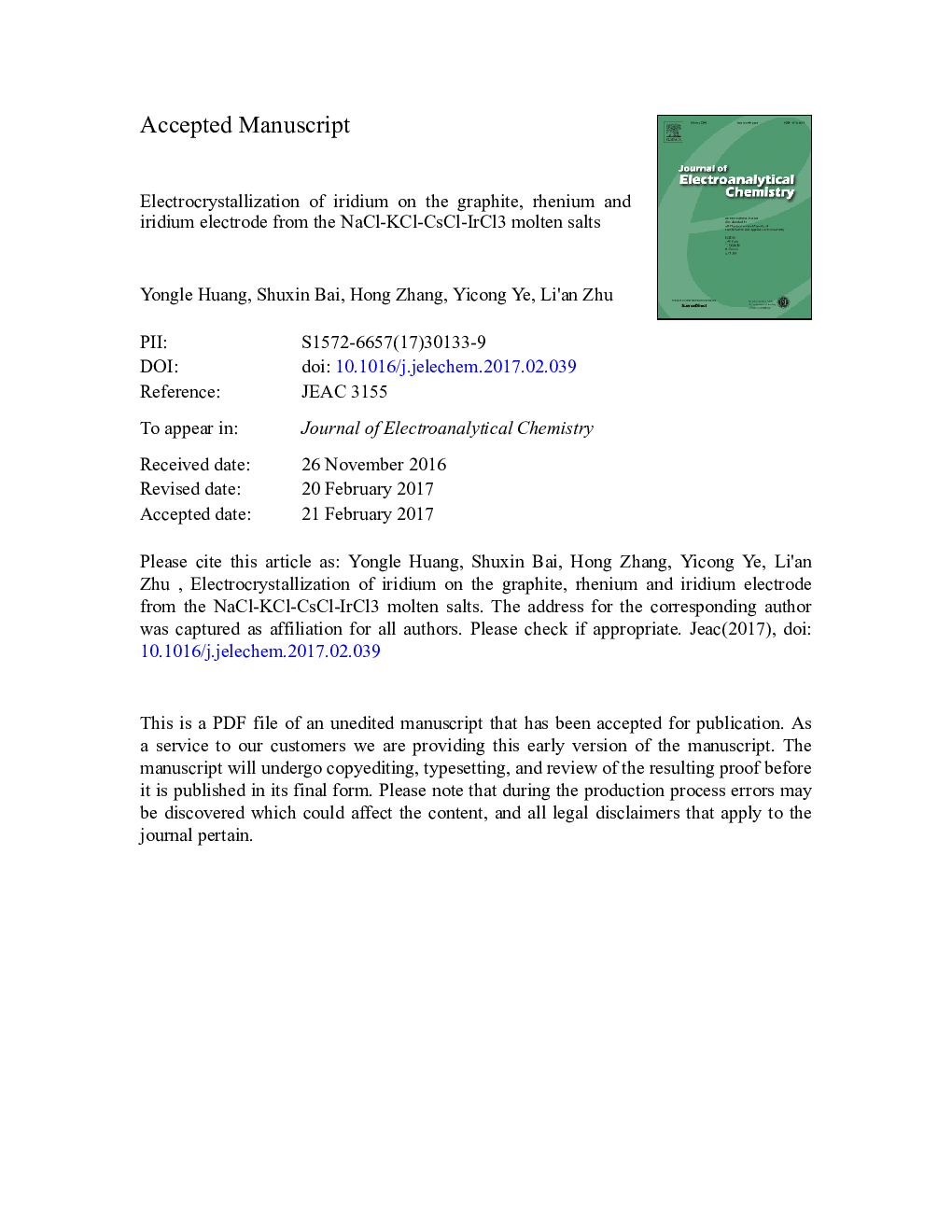| Article ID | Journal | Published Year | Pages | File Type |
|---|---|---|---|---|
| 4907966 | Journal of Electroanalytical Chemistry | 2017 | 55 Pages |
Abstract
Mechanism and kinetics of iridium (Ir) electrocrystallization on the graphite, rhenium (Re) and Ir electrode was investigated in the NaCl-KCl-CsCl melts containing 0.5 mol/L IrCl3 at 570 °C. It found that the 3D spherical Ir nucleuses on graphite electrodes were grown from the laminated structure of graphite. There were two kinds of Ir nucleus were observed on the Re electrodes, 3D hemispherical particles and 2D layers. Ir nucleuses on its intrinsic substrates were 3D hemispherical particles growing directly from the original Ir grains. The results suggested that nucleation of Ir on graphite electrodes was an 3D island growth process (Volmer-Weber growth mode) under diffusion-controlling, and that on the Re electrodes followed the so-called Stranski-Krastanov growth mode, namely 3D Ir particles deposited on the pre-deposited 2D Ir layers. Nucleation of Ir on its intrinsic substrates was also a 3D process. The best non-linear fitting results of current transients showed that both initial nucleus density N0 and nucleation rate A of Ir particles on the three electrodes increased with the applied over-potential. Nucleation of Ir particles on its intrinsic substrates had the highest initial nucleus density and nucleation rate. Taking the nucleus density and bond strength into consideration, Ir substrate was the best choice for electrodeposition of Ir coating following by the Re substrate.
Related Topics
Physical Sciences and Engineering
Chemical Engineering
Chemical Engineering (General)
Authors
Yongle Huang, Shuxin Bai, Hong Zhang, Yicong Ye, Li'an Zhu,
